

|
Welcome to the DC Gamer where you will find a wide variety of thoughts, reflections, critiques, and ramblings on board games. If you have no familiarity with modern board games, then check out the description of "german-style board games" at Wikipedia, browse the forums at BoardGameGeek, read the latest news at Boardgame News, see this listing of Awards, check out the archives of the Games Journal, and try your hand at a game or two on BrettspielWelt. Let me know if you have any comments, questions, or other reactions. Thanks for reading the DC Gamer and enjoy! Please click here to sign up for the RSS feed: 
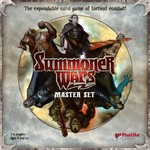
|
As the end of the year approaches, itís a good time to look back at the past year in gaming. 2011 got off to a disappointing start with a slew of underwhelming Nurnberg releases that I discussed back in June. Fortunately, the year recovered nicely during the summer and fall from the earlier depths of Artus, Strasbourg, and Pergamon. 2011 was helped out nicely by the belated yet very welcome release of the Master Set for Summoner Wars, along with a nice Essen crop in October, featuring great Czech, Polish, and French designs to complement the German staples. And of course 2011 has been capped off by the 2nd edition of War of the Ring finally being released, which should help get this masterpiece into many more hands and onto many more tables. While itís too early to pick a game of the year since there are still new releases to be tried and many to be played at least a few more times, Iíll handicap some early favorites along with a brief look through the games that saw the table most frequently. -- Click here to continue reading... |
The Japanese games that tend to make a splash in the U.S. market are those with zany themes and components. Games like String Railway, Gra Gra Company, and Magical Athlete are the ones that get peopleís attention. But Iíd like to draw your attention for a moment to two excellent Japanese card games that are neither wacky nor well-known. They are Dazzle and Khmer, both released by the publisher Saien in 2010.
Both are two-player card games and each takes roughly 20 minutes to play. Iíd consider them in the same vein as games like Jaipur, Biblios, Lost Cities, Odinís Ravens, and the like... except that far fewer people actually own them or are even aware of them. Iíd like to do what I can to rectify this by explaining what youíre missing by not having these two gems readily available. -- Click here to continue reading...

|
I'm back from BGG.CON in Dallas and ready to report on my findings. I've tried 35 of the new Essen games and am here to rank them from top to bottom as I'm wont to do. I have also included a brief blurb on each game to give a sense for my reasoning. More in-depth reviews are sure to come from the OG in the weeks to come. I have broken the games down into groups, but ordered them within each group from favorite at top to least favorite at bottom. I have played most of these games just once so need to play many of them again to shore up my opinion, but I've included my number of plays in parentheses for games that I've played multiple times. Let's get right to ranking those games and my initial thoughts on each. -- Click here to continue reading... |
It's time for another update on activity over at The Opinionated Gamers, which launched almost a year ago as a new home for the types of columns and reviews that had previously been published on Boardgame News, but which were not incorporated into the news features as the site was merged into BoardGameGeek. In Norenberc, Navegador, and London, I shared a handful of articles from the OG that I wanted to highlight as well as a few mini-reviews that I'd written for the site. I'm going to do the same thing again now that 9 more months have passed.
First and foremost, the OG had some fantastic Essen coverage, which was all compiled on the OG Essen page. There are 28 previews there leading up to the fair along with 20 convention reports, including many from the four columnists that attended the convention. Kulkmann's G@amebox has been the pinnacle of Essen reporting for years, but the collective OG coverage might just give Kulkmann a run for his money. I particularly enjoyed the varied styles and approaches of Liga, Dale, Patrick, and Jeff in reporting on their experience in Essen. -- Click here to continue reading...

|
Time again for our quarrelsome duo, Larry Levy and Tom Rosen, to exchange verbal blows over another gaming topic. This time, theyíre arguing over one of the hot trends in the hobby -- cooperative games. Gentlemen, go to your respective corners and come out swinging! Larry: Can the Co-ops! Well, Tom, it looks like our first article in the series was well received and as expected (by me, at least), you were squashed by the court of public opinion. I fully expect this next debate to go the same way, so stock up on the crying towels. -- Click here to continue reading... |

|
I was dumbfounded to discover that there are no strategy articles out there to be found on the deeply strategic game Tier auf Tier. This is a game that requires complete mental focus, a great deal of experience, and a firm grasp on all the possibilities and their potential ramifications. Beginners sometimes overlook the complexity of Tier auf Tier, failing to appreciate the nuance of this brain burner. Iím here to help run through many of the classic positions and moves that any self-respecting Tier auf Tier player needs to master. First off, thereís the classic yet elusive ďdouble hogĒ maneuver. A fine example of needing to know the attributes of your playing pieces. Just as a chess player must fully grasp the various uses of the bishop as opposed to the rook, a Tier auf Tier player must do likewise, but take it to a whole other level by understanding all of the different possible orientations of their pieces as well. A discerning player will immediately recognize and appreciate the benefits and pitfalls of the ridges on the hedgehogís back. These can be used for many purposes, but the ďdouble hogĒ is the most solid and stable. This is when one hedgehog has been placed on its stomach and the other is placed above lying on its back. The animals interlock with an almost zipper-like bond that can be used as the base for a wide variety of follow-up plays. -- Click here to continue reading... |
Every year the Fairplay and GeekBuzz rankings at Essen are simultaneously a great source of information and amusement. They provide useful information because they can call your attention to a game that you might have overlooked and help you prioritize your interest among the hundreds of new games. On the other hand, theyíre amusing because you have to take the rankings with a giant heap of salt. Itís always good to keep in mind that the people rating games for Fairplay and GeekBuzz are often not even playing one full game, but rather are getting a quick demo in a crowded and noisy hall from someone who might speak their native tongue as a third language. Despite their dubious nature, itís still always fun to look over the rankings as they emerge. Although to keep their reliability or lack thereof in mind, I often find it helpful to look at the current yearís rankings side by side with past years to see how well those past picks have fared.
The GeekBuzz rankings for this year and the past two years are listed in the following table. I have bolded the games that overlap with the Fairplay top ten. -- Click here to continue reading...
The live streaming videos from Essen that BoardGameGeek has been doing so far are a great way to experience the convention remotely. Iíve found them entertaining and a fun method for both learning about new releases and seeing the designers/publishers talk about the games firsthand. Itís great to see so many excited and enthusiastic designers and publishers as they present their games and probably for many of them are just now finally seeing the finished product. The schedule for the live videos is available at this page. The link to the streaming video can be found here and the archived videos are being stored here.
So far Iíve enjoyed a number of the videos. The video with Ignacy T. from Portal was great fun. He was very amusing in his presentation of Pret-a-Porter, particularly in describing the playtest with the potential financial backers of the game. Ignacy also gives some interesting insight into the design of the new 51st State expansion/sequel Ė The New Era. He explains how a couple of the changes in the new game were based on feedback from the gaming community concerning interactivity and fiddly components. The Opinionated Gamers had great in-depth previews of Pret-a-Porter and 51st State New Era, but thereís something nice about also watching an excited and engaging designer discuss his new games. -- Click here to continue reading...

|
Essen is coming. Hundreds of new games on the verge of being released and a patchwork of information and snippets available about each one. I've scoured the previews to find a manageable handful of games that really deserve some pre-show attention. These are sorted in the rough order of my interest level. My track record may not be fantastic, what with my 2010 Essen Anticipation list being a mixed bag in terms of games that did and did not pan out, but that won't deter me from sifting through the new releases once again to divine the most notable ones. I've tried to include links along the way to some actually useful information, such as videos or rules, so take a look and perhaps you'll find an upcoming game worth checking out. -- Click here to continue reading... |

|
Tom Rosen and Larry Levy are good friends who regularly get together to play games as part of their games group. Despite this Ė or perhaps because of it Ė they seem to have very different ideas about gaming and are not shy about pointing out just how misguided the otherís views are. In this semi-regular series, weíll eavesdrop on one of their many gaming arguments to get their opposing opinions on a variety of subjects. Feel free to take a side and add your own thoughts on the subject as well. This time, the topic is board game expansions. Letís listen in... -- Click here to continue reading... |
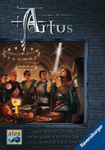
|
Common wisdom seems to be that 2011 is off to a great start game-wise and is shaping up to be a much better year for new releases than last year. I beg to differ. The first half of 2011 has been anything but inspiring, with only a handful of bright spots so far and more than its fair share of duds. Iím here to caution you to beware and at least try before you buy when it comes to many of the most recent releases. Itís possible that my sample size has been too small with 18 releases from 2011 tried so far. Itís certain that many of these 18 games have their fans. But for the opposing viewpoint - and for anyone hoping to save money or shelf space by trimming their wishlist - read on. -- Click here to continue reading... |
The Czech Republic has quickly become the center of board game innovation in recent years. With the ascendancy of Czech Games Edition and with a diverse array of games being designed by one Vladimir or another, there seems to always be something to look forward to coming out of Germanyís neighbor to the east. The best part is that thereís something for just about everyone. Whether youíre a fan of civilization games, cooperative games, adventure games, party games, auction games, or various other genres, the Czechs have something for you. In just five years in the market, CGE has built an impressive portfolio to rival a number of more longstanding publishers.
But youíre not here to hear about whatís come before. Weíre not a hobby that dwells on the past, but rather one that looks ever to the future. I was fortunate enough to recently try out five Czech prototypes and am back from the horizon to tell you about whatís ahead. Please keep in mind while reading the descriptions and viewing the photographs below that all of these games are prototypes and not final. That means that the gameplay may change and that the photographs are of rough playtest copies. None of the artwork for these games is finished so the final products will not look anything like what you see below. I still thought it would be useful to share a few photos to help you visualize what the games involve, but you should look at them with this cautionary note in mind. -- Click here to continue reading...
Sixty-three games enter; only one can emerge victorious. This year I decided to do things a little differently and go through and rank all 63 games released in 2010 that Iíve tried from top to bottom. I simply compared them relative to each other and determined the relative order in which I would generally desire to play them. This is of course fairly artificial because Iím comparing three-hour apples to twenty-minute oranges, but such is life. In addition to ranking the games from 1st through 63rd, Iíve also grouped the games into seven categories with general descriptors of my feelings toward that grouping. On the BoardGameGeek scale these seven categories correspond roughly to the ratings 9 through 3 if that helps situate your thinking, although note that the categories donít track precisely to BGG ratings. Originally I thought that this would be a short summary with a brief word or two on each game, but of course the story grew in the telling, becoming a bit of a behemoth. If youíd prefer something like Iíve more traditionally done last year or the year before then I suppose you could just read the first five game entries below and walk away with my winner and other top nominees. But it was a year with a wide range of games in my mind and so a fitting year to explore and revisit not only my favorites but also down through the middle of the pack to the bottom of the barrel. And so here are the 63 games from 2010 that Iíve tried, with a bit of an explanation on why they did or did not resonate with me, which will hopefully help you decide whether any given game might be your cup of tea and worth investigating further. -- Click here to continue reading...

|
We're often told to be careful not to mistake correlation for causation. The maxim that correlation does not imply causation is burned into your brain from day one of any statistics course. Just because the rate of swimming accidents increases as ice cream sales increase does not mean that ice cream causes swimming mishaps. This might be an obvious example of this fallacy to spot, but it is nevertheless true that we can easily fall into the trap of assuming that a causal relationship exists where there is none. What about the reverse error of mistaking causation for correlation? We are much less wary of this far less common possibility. And yet, I recently came across an example in the board game world where a correlation was being measured and provided without any consideration for the causes of that apparent correlation. It struck me that the data showing a close correlation between the game ratings of myself and various friends may have been ďcorruptedĒ by my learning a number of games from and playing those games with the individuals in question. -- Click here to continue reading... |
The Opinionated Gamers launched toward the end of January 2011 as a new home for the types of columns and reviews that were previously found on Boardgame News, but which would not be a part of the news features as it was folded into BoardGameGeek, namely the opinion-based articles. After just a little over a month, I've been remarkably impressed by the quality and quantity of the output of my fellow writers. Three pieces in particular that I wanted to highlight are: (a) Postcards from Berlin #45: Limits by Jeffrey Allers; (b) The Art of Design: Interview of Leo Colovini by Andrea Ligabue; and (c) A Guide to German Publishers: Part I and Part II by Patrick Korner. The first is as good as any of Jeffrey's earlier Postcards from Berlin on BGN, which is to say excellent. The writing is easily some of the very best out there in the hobby and the way the ideas are weaved together is so seamless and compelling that he makes it look far easier than it is. The second is a wonderfully in-depth interview, yet with a different outlook than you might be used to, and makes for a very entertaining read. Finally, Patrick's guide to publishers is a strikingly well-researched piece that is bound to be an indispensable article for anyone looking to learn about the fundamental building blocks of the industry. -- Click here to continue reading...
Note: Below is an entry I wrote for the induction of Carcassonne into the BGG Hall of Fame. Check out the Hall of Fame itself to read about the six other inductees in the 2010 class. For more information about the Hall of Fame, check out this forum thread.
Carcassonne is the ambassador of the modern Golden Age of board games. Carcassonne is the board game you should be introducing to anyone who asks what kind of board games you play and whether theyíre like Monopoly. Carcassonne is the ďgatewayĒ game if there ever was one and the staple of any fledgling board game collection. Carcassonne is all that and itís actually a great game too; one that experienced gamers ought to dust off and revisit. -- Click here to continue reading...
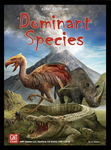
|
It turns out my board game research abilities are worthless. A few weeks ago I created a list of the top 20 games coming out of Essen 2010 that I needed to try. Fortunately I always try to remain flexible at BGG.CON and open to trying games that hadnít hit my radar before. In the end, none of my top 4 games of the 2010 releases that I have tried so far were on my list of anticipated titles or even considered for the list. Many of the games Iíd been eagerly anticipating on my list were in fact quite good, but the truly great games in which I see a lot of potential were a handful of games that came out of nowhere for me. Back in November 2008, I ranked all of the Essen releases that I had tried up to that point in my November Madness column, so I'm going to go ahead and try the same system this time as well. I'll include a few sentences about each game, along with the number of plays on which my opinion so far is based since many of these are preliminary impressions based on only a couple plays. So without further ado, let's get to the games! -- Click here to continue reading... |

|
Essen has come and gone, but for those of us across the pond the fruits of Essen are yet to come. Now comes the long, hard wait for domestic publishers to pick up the various titles that weíve spotted in Essen photos, reports, and videos. Having scoured the Internet for all things Essen, Iíve come up with a list of 20 games that I know Iím anticipating. In case youíve been overwhelmed by the deluge of Essen information and canít find the time to hunt through the 548 items on the Essen 2010 Canonical List or the plethora of info in the Boardgame News Spiel Preview, Iíve distilled them down to these manageable few that might be worth your time. The sheer number of games released every year at Essen is truly mind boggling, but the great thing these days is that there are so many resources online for learning about the games, such as videos, rules PDFs, photos, BGN announcements, etc. Iíll include a number of links below for each game to these resources so you can go directly to the primary source for any game that particularly strikes your fancy. While Iím mentioning great online Essen resources, Iíve got to put in a plug for the incomparable, unbelievable Kulkmannís G@amebox, which is truly the gold standard in Essen reporting. Luckily while Iím waiting for these 20 games to be released domestically, I can head down to Dallas for BGG.CON in a couple weeks to try as many of these out as possible in order to hopefully prune this down a bit further to a manageable purchase list. In the meantime, I hope the distilled list helps you make sense of the vast, jumbled Essen landscape. -- Click here to continue reading... |
A strange pattern has emerged. This is a tale of first impressions and second chances, of underestimation and redemption, and of the mysterious April curse. There are countless games that I relentlessly love from day one and plenty of others that I loathe from first blush, but the ones for which my heart waxes or wanes over the course of time are of greatest interest for further investigation. Evaluating the instances when a game's star rises or falls after repeated exposure is one of the best ways to better understand your tastes. It's these circumstances where you have the opportunity to glimpse the machinery of your gaming preferences in operation, chugging along and working to align with your new-found opinion. When you find yourself suddenly, or even gradually, coming to seek out chances to play a game that you previously avoided at all costs, or dreading a game that you previously championed, that's when you can really discern what you're looking for in a game. As they say, actions speak louder than words, and so I've learned to trust my actual game plays more than my professed opinions, and when I'm suddenly clamoring for a game that I thought I didn't care for, I trust that means I was mistaken. -- Click here to continue reading...

|
Arriving in Columbus, Ohio at three o'clock in the morning on Thursday, June 24 after a long drive was not a particularly auspicious start to my first time attending a large convention (i.e., not BGG.CON), but it turned out great in the end. The 35th Annual Origins Game Fair just wrapped up and Iím here to report back on the new and not-so-new games that I tried as well as the convention experience generally. Despite heading to Ohio with a list of 108 games that I wanted to try and only actually playing 8 of them, I managed to play a surprisingly large number of games (almost 40) with a lot of great people. I suppose the other 100 will just have to wait until I head down to Dallas in November. -- Click here to continue reading... |

|
There are many joys of gaming, but one joy that a few recent games have denied me is the joy of specialization. Many games allow players to score points in a variety of categories or through a variety of methods, and determine the ultimate results by adding up your points in each of the possible categories or achieved through each of the possible methods. However, only some of those games truly allow you to specialize and devise a unique path to follow as you attempt to gain as many points as possible, sometimes neglecting certain categories or methods for the sake of focusing on others. Many games prevent or discourage specialization by overly rewarding a generalist approach that does a little bit of everything, which effectively blocks players from trying and exploring specialized - and dare I say interesting - strategies. -- Click here to continue reading... |
A third consecutive year with a non-German designer winning my Game of the Year would have been unthinkable in the 1990s, but in this day and age it's perhaps not even noteworthy. The globalization of board game design over the past decade has been remarkable, and these days we have great designs coming from all corners of the world, and especially from all corners of Europe. I'm not quite sure what has happened to the Knizias, Kramers, Dorns, Moons, and Teubers of the world in recent years, whose games still dominate my all-time Top 25 favorites, but I think it has something to do with the classic great designers getting stuck in a rut (see, e.g., Alcazar, Ra: The Dice Game, Samurai: The Card Game, and the ad nauseum additions to the Keltis, Ticket to Ride & Settlers of Catan families), while the new designers are the ones pushing the envelope and innovating. The German dominance of my Game of the Year ended in 2006 with Mac Gerdts' Imperial, and the non-Germanic three-peat started with Vlaada Chvatil's Galaxy Trucker and Antoine Bauza's Ghost Stories. After sending the award out to the Czech Republic and then France, what country will it land in next? For the answer to that, you'll have to first read through a discussion of the nominees. -- Click here to continue reading...
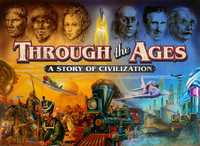
|
The worst thing about recently moving from NYC to DC was leaving behind all of the friends with whom I played board games. Sure I miss the restaurants, and the theater, and the convenience, among other things, but the people back in NYC top the list. The isle of Manhattan does not have a particularly robust or organized board gaming community, as opposed to other cities across the country such as Denver, but there is a smattering of gamers who I've had the pleasure of meeting over the past few years. I managed to convince two of them - John and James - to travel down the coast to visit DC on two different weekends in January. The nice thing about moving from NYC to DC is not only that I now have room for a third bookcase of games, but also that I have a guest bedroom for hosting out-of-town visitors attending our own personal board gaming extravaganza. This is the tale of the gaming marathons that ensued in our nation's capital in the dead of winter - J&J Con. -- Click here to continue reading... |
Another year of gaming is in the books, which means it's time to analyze the statistics and come up with a new list of Evergreens, Falling Stars, and New Contenders. This is my fourth full year keeping track of my games played, so I've created a chart below that encompasses all four years of data from 2006 through 2009. For last year's results check out my Round Number Gaming column, and for the previous year's results check out Nickels and Dimes and Quarters, Oh My! For even more data, statistics, and analysis, head over to my article on Quantifying your Fun, which I wrote to celebrate the three-year anniversary of logging my games played (from June 28, 2005 to June 28, 2008), and which looks at my games played per month and by designer. Without further ado, below is the table that shows my Nickels, Dimes, and Quarters for 2009 and the three previous years. Beneath the table you will find a brief discussion of all the games that made the chart in multiple years, broken down into sections for games that made the list in four, three, or two years. Only one game made the chart in all four years, so I've lowered the bar for a game to be considered an "Evergreen" to those that made the chart in at least 3 out of 4 years, which admits six games into the fold. Then comes a discussion of all the games that made the chart in any 2 out of 4 years. This includes the: (a) Falling Stars, which entered the list in 2007, stuck around in 2008, but missed out in 2009; (b) New Contenders, which entered the list in 2008 and made the cut in 2009 as well; (c) Off the Radar, which were played enough in 2006 and 2007 to appear in the chart, but have disappeared in recent years; and (d) Trampoline, which is the only game to make the chart in multiple years but not in consecutive years. Now it's time to get back to playing games in 2010 so I can see how the chart shakes out for its fifth anniversary next January. -- Click here to continue reading...

|
The number of new games being released each year is absurd, and my urge to try as many of them as possible is even more absurd. I tried 77 new and new-to-me games in the second half of 2009 and am here to report on my findings. The following is a brief discussion of each game organized alphabetically within the month in which I tried them. These are meant to be a cross between mini-reviews and tangential commentary on topics that these games bring to mind. This is a follow-up to my previous column on Q1 & Q2. My hope is that these blurbs spur your interest in a game or two, regardless of whether or not its one I personally enjoyed. My goal is to provide at least a kernel of information on each game to pique your interest so that you further investigate and try out a few new-to-you games, or if you're looking to prune your wishlist then perhaps I can be of some assistance in that regard. As far as how this crop of games turned out overall, I have to agree with Larry Levy when he says in his article on The Two Faces of Essen that the new games of 2009 have been unusually split between very good and very bad, with far fewer middling games than usual. I'm sure reasonable people will differ over which side of the spectrum many of the new releases belong on, but below you'll find my thoughts on the matter. -- Click here to continue reading... |

|
Out with the old, in the with the new - it's a way of life for many in the board game hobby. I love to revisit old classics from time to time, but nothing beats exploring a new game, learning the rules and working your way through that first play as you see how the game comes together and the mechanics interact. As I discussed last month, many games lose their appeal after you've played them a few times because the sense of adventure is gone and the spark of interest that unfamiliarity breeds is extinguished. In that spirit of constantly trying new games and exploring their rule sets, I decided to mentally revisit all of the new and new-to-me games that I played during the first half of 2009 and share my thoughts on them with you. I'll save the games from the second half of 2009 for a follow-up column at the end of year. These are meant to be a cross between mini-reviews and tangential commentary on topics that the games bring to mind. Hopefully these will spur your interest in a game or two, whether it's one that I enjoyed or didn't enjoy personally, perhaps these comments will provide a kernel of information to pique your interest to further investigate and try out a few new-to-you games. -- Click here to continue reading... |
Essen is dead; long live Essen. The International Spieltage in Essen, Germany closed its doors on Sunday, and there are 359 days until those doors reopen, which should leave us just enough time to sort through the roughly 600 new board games that were released at the fair. Despite the fact that I didn't attend Essen, have only played a handful of the games discussed herein, and the fact that my last attempt at an Essen recap in 2006 was more than a bit off base (e.g., underestimated Imperial, overestimated Gheos, but at least I was right about Anasazi and Justinian, let alone Knizia's Genesis); I am nevertheless going to try to breakdown some of the potentially most noteworthy releases at Essen 2009. How do I propose to do this? Scientifically of course, and also based on more than a little hearsay thanks to the tireless reporting efforts of attendees such as Kulkmann and Melissa. Scientifically speaking, I am going to use a combination of the longstanding Fairplay ranking along with the brand-new BoardGameGeek GeekBuzz ranking. As for hearsay, you're more than welcome to check out my primary source material, such as Kulkmann's G@mebox (by Frank Schulte-Kulkmann) and Obsessing about Everything (by Melissa R.). Moreover, I suggest you check out the videos that the GeekDo crew broadcast live throughout the fair, such as interviews and game demos, and which have been conveniently arranged in this GeekList. I particularly enjoyed the interviews with Matt Leacock, Jay Tummelson, Uwe Rosenberg, Reiner Knizia, and the game demoes by Martin Wallace, Mac Gerdts, and the Czech Games Edition crew. If you're looking for purely audio rather than video, then check out Garrett's Games & Geekiness episode 184 recorded live at Essen. Last but not least, I have tagged over 100 forum threads and GeekLists with the "essen09" tag on BoardGameGeek, so peruse those for a wealth of fantastic firsthand reports on the Essen experience. -- Click here to continue reading...
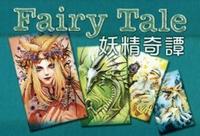
|
Many games lose their appeal after you've played them a few times, maybe most games. You spend months looking forward to their release, perhaps you even pre-order the game and then check the FedEx or UPS tracking number constantly once it finally ships. Then it arrives and you eagerly tear off the shrink wrap, punch out all of the pieces, bag them, and read the rules (if you haven't already downloaded and read a PDF of the rules). You bring the game to game night and convince the group to give it a try. If you're lucky it's a blast and everyone enjoys it. Then you play it again a couple weeks later, and maybe a third time within a month or two. It's still fun but it's no longer shiny and new. It's still enjoyable, but not quite as exciting and the sense of adventure is gone. Then again, this may not sound like a familiar pattern to you, but it certainly is to me. That's why I particularly treasure games that get better the more you play them. These are games that may not even be very good the first time you play them due to the lack of familiarity with the system or possibilities, but if you give them a chance, they'll repay you many times over. It's a small crop of games, and a disparate one as well. They're treasures in my collection because this is the type of game that never gathers dust as it ages. The only thing they really have in common is that they all fell flat at first, and now their vintage is properly aged and coming into its own. -- Click here to continue reading... |

|
One game just barely missed the cut to be one of the Final Five in my Best in Show article last month highlighting my favorite games from 2008. It's a game where you play the people just as much as the game itself, if not more so. It's a game that you simply have to experience and go along for the ride, and it's one of the most group-dependent games, meaning that your experience will depend in much greater part on the other people involved than in most other games. The game is Battlestar Galactica, based on a television series that ran from 2004 to 2009, which in turn was based on an older television series from the 1970s. The game was designed by Corey Konieczka and published by Fantasy Flight Games. It's nominally for 3 to 6 players, although the consensus seems to be that it's better with more players, with some I've talked to preferring 5 players and others opting for 6 players. I've tried it with 4, 5, and 6 players, not with 3 yet, and enjoyed it with all of these player counts. There were advantages and disadvantages to each player count, which I'll delve into a bit later. -- Click here to continue reading... |

|
The wooden hut wasn't much, but the bearskin rug on the floor really tied the room together. It was a snug fit for Titus and Andrea, recently married and both orphaned by the Plague, which had ravaged their idyllic central European countryside for centuries. The hut was surrounded by a plot of bare land, but they were an industrious couple and set out at once to develop the land, plowing the fields, sowing crops, and building fences to raise livestock. It was the Spring of 1670 and Titus set out at once to learn the profession of clay mixing. He traveled to a nearby town where he learned the delicate art of mixing clay from an accomplished Clay Mixer. Titus would return home to share the secret of this profession with his wife so that the entire family could reap the rewards of abundant clay. In the meantime, Andrea was beginning to feel the tingling sensation of impending hunger and fearing the repercussions of starvation, she set out at once to plow the fields so that she could eventually sow grain and one day possibly even bake a loaf of bread or two. -- Click here to continue reading... |
The annual board game award season is upon us. The committee members for the Spiel des Jahres have just recently announced their nominees for game of the year from the previous year, and the committee members for the International Gamers Award will soon follow suit, among many others. Youíll be inundated with recommendations from people whose opinions youíve come to trust and rely upon. But before all that gets too far under way, itís time first for an award thatís neither brought to you by a committee nor by someone whose opinion you necessarily trust. Itís my very own NYC Gamer award. Established in 2007 with my Games of the Years article, it has a long and distinguished history of honoring the best game of the year. Then again, the retroactive awards date all the way back to 1876, so in a way, itís the longest running award in the industry (with a mere 83 year gap between Crokinole receiving the 1876 award and Diplomacy receiving the 1959 award). -- Click here to continue reading...

|
It all started innocently enough. Iíd played Bamboleo a few times before and I was learning to play Zoch Verlagís earlier offering Bausack. Iíd gone from removing strangely shaped wooden blocks from a teetering structure to adding strangely shaped wooden blocks to an increasingly teetering structure. It seemed like a natural fit to combine the two, removing a block from the Bamboleo board and then adding that same block to your Bausack tower. I had no idea how far the concept could go. Soon I was suggesting that almost any game could be combined with Bamboleo. Why not have to remove any and all of the components that you want to use from the Bamboleo platter before getting to use them in another game? Things may have gotten a little out of hand when I started contemplating new rules for Antiquity or Roads & Boats, requiring players to carefully remove a granary or raft factory from the Bamboleo platter before constructing their desired buildings. However, up to a point, I still think combining games with Bamboleo is potentially a good idea. Thus was born Project ZOCH. -- Click here to continue reading... |

|
Allan B. Calhamer is a genius. Move, support, hold, and convoy. Itís an amazingly simple system that underlies an incredibly complex game of psychological warfare. Itís also an admirably adaptable system that has been modified to fit over a thousand variants of the original. The ďgameĒ is Diplomacy. Itís infamous as the game thatís been ďDestroying Friendships since 1959.Ē Itís certainly not for the faint of heart as itís a brutal reenactment of pre-World War I political realism where alliances are merely a means to an end and allies are tools to be used and discarded. Diplomacy is the quintessential negotiation game where everything rides on your ability to make others see things your way and nothing can be accomplished without convincing your neighbors that youíre not a threat. Itís really the perfect board game, as long as your friendships are solid enough to withstand the bald-faced lies and deceitful betrayal that are an inherent part of the experience. -- Click here to continue reading... |

|
Five is perfect, six is a crowd. Youíve got a great night planned with El Grande, Wallenstein, and Santiago on tap, but then that dreaded sixth person shows up and your plans are dashed. Whatís a game group organizer to do? Six is the dreaded number of people. There are countless threads in the forums on BoardGameGeek inquiring desperately for recommendations of board games that work well with six players. People inevitably respond with their best efforts, with games that work with six, with games that are okay with six. Thatís a disservice to the people and to the games. The only real answer when you have six people is to play two three-player games. Itís sad to say because there are so many amazing five-player games (e.g., El Grande, Princes of Florence, A Game of Thrones, Liberte, Wallenstein, Santiago, Oasis, Amun-Re, Traders of Genoa, Die Macher, Maharaja). There are a plethora of games that work best with their maximum number of players, but unfortunately that maximum is five more often than not. And when the maximum is six or seven, itís more often a case of the publishers deluding themselves. Iím a stickler for finding the optimal number of players for each game and have discussed my thoughts on the subject before in The More the Merrier? Iíve found myriad great games for two, three, four, and five players, but the well runs dry at six. Sure there are a small handful of good six-player games, and I might as well get those out of the way up front. -- Click here to continue reading... |
I have two acquaintances at work, let us call them ďJoeĒ and ďBob,Ē who adamantly refuse to learn any modern board games. Both Joe and Bob enjoy and somewhat frequently play Chess, Scrabble, and Poker. Theyíre intelligent and clearly enjoy board games. Joe has also expressed nostalgic interest in Risk. Theyíre an interesting case study in the spread of modern board games because Iíve tried everything I could possibly think of to interest them in trying a modern board game and, being the lawyers that they are, they have an abundance of counter arguments to explain and justify their disinterest. Whatís particularly confounding is that I had a fairly good success rate at converting people to the board gaming hobby in law school, where I founded a student organization. People came to the club expecting to play Monopoly and Risk, and left intent on purchasing Settlers of Catan among others. Not so with Joe and Bob, who are convinced and adamant in their opposition to learning new games. I find this an interesting subject for discussion because there are many of us in the hobby who hope for the day when modern board games replace the tired old classics in every familyís cupboards. We, or maybe just me, truly believe that Ticket to Ride, Settlers of Catan, and Carcassonne should replace Monopoly, Risk, and Life in every home across the country. We see the slowly growing widespread popularity of Settlers as a testament to the inevitable superiority of modern board games. Maybe weíre deluding ourselves. -- Click here to continue reading...
Gamers have an obsession with round numbers for some inexplicable reason. Every year around this time we flock to compile our "Five & Dime" lists. These are lists of games that we played at least 5 times in the previous year and at least 10 times in the previous year. Being the logical fellow that I am, and given the exceedingly large number of times that I play some games, I decided to add Quarters (games played at least 25 times) to the list along with Nickels and Dimes. I've been keeping track of my games played since June 28, 2005. So that means I now have three complete years of statistics to pore over. On June 28, 2008, I celebrated three years of keeping track of my games played by publishing my Quantifying Your Fun article. But now I have three complete calendar years, so unlike last year when I could only compare the partial year of 2005 and 2006 with the plays from 2007 in my Nickels & Dimes & Quarters, Oh My! article, this year I can compare three full years of gaming. I've decided to celebrate the occasion with a large table of results, and a few bullet point lists to boot. -- Click here to continue reading...
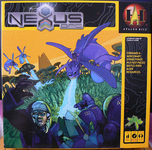
|
Four-player games are a dime a dozen, but four-player games that allow players to compete as 2 two-person teams are diamonds in the rough. An exceedingly small percentage of four-player games let the players divide themselves into two teams to square off against each other with a partner at their side (figuratively of course, as the partner is usually sitting across from you). Whatís so special about these team games besides their obvious rarity? Itís hard to pin down precisely, but working with a partner adds an extra layer to the decision-making process in a game. Not a minor wrinkle, but rather a major shift. It forces you to reformulate your entire approach so that youíre thinking in terms of ďweĒ and ďusĒ rather than just ďIĒ and ďme.Ē This is all on top of the more traditional mechanics of the game, whether those involve resource management, spatial positioning, trick taking, dexterity, hand management, etc. -- Click here to continue reading... |

|
November was so chock full of gaming that discussing the 158 games that I played last month couldnít possibly fit into a single article. A couple of weeks ago I wrote Part 1 of this series where youíll find my ranking of the 30 new releases Iíve played, from my favorite 2008 games such as Ghost Stories, Planet Steam, and Chicago Express down to my least favorite new games such as Boss Kito, Stone Age, and Street Paintball. In addition, since Iím breaking down the games played into topical categories rather than going through them chronologically or alphabetically, Part 1 covered all of the cooperative games and all of the racing games. Iíll try to fit the rest of November Madness into this Part 2 and save you from drawing it out into a trilogy. There are a few more categories to go though, so this might mean trying to be concise, which has never been my forte. -- Click here to continue reading... |
It started with Tolkien's Lord of the Rings, as so many geek journeys do. I read the quadrilogy (including The Hobbit) once, twice, and eventually came back for a third time. I visited Tolkien's Eagle & Child pub in Oxford to really get the full effect. Eventually I moved on to try other Tolkien works, but they didn't keep my interest in the same way and I gave up on Tolkien. Next up was Frank Herbert's Dune. It blew me away. I read it once and knew that I hadn't even scratched the surface, so I read it again. Then I moved on to Dune Messiah, Children of Dune, God Emperor of Dune, Heretics of Dune, and Chapterhouse: Dune. They were good (especially Children of Dune and Heretics of Dune), but not great, and they all paled in comparison to the original. I went back and re-read Dune for a third time and cherished it even more. Then I made the mistake of buying the Prelude to Dune prequel trilogy by Frank's son Brian Herbert and co-author Kevin J. Anderson. I read most of the first book Dune: House Atreides before giving up and running far away from the Dune universe. -- Click here to continue reading...

|
The ďbig danceĒ is still four months away, but my personal gaming madness was definitely November. I played more board games in November than in any previous month, many of them new releases thanks to the fabulous BGG.CON in Dallas, so I thought it might be worthwhile to share my initial impressions to help you formulate your post-Essen shopping lists. Hopefully I can help you winnow your shopping list down a bit if it has grown out of hand, but also help you spot a potential gem or two to throw on the pile that you might have previously overlooked. There are many great sources of information on these games already, from the reviews and session reports on BoardGameGeek, to the other columns on Boardgame News, to the numerous blogs, such as Kulkmannís G@amebox, Melissa Rogersonís Obsessing About Everything, and Mike Sigginsí Gamerís Notebook. However, I might as well add my voice to the din. I thought about listing the 158 games that I played during November in alphabetical or chronological order, but ended up deciding to break them down into categories that would make more sense for purposes of comparing and contrasting the games (e.g., cooperative games, racing games, dexterity games). Without further ado, I present a recap of my November Madness. -- Click here to continue reading... |

|
Athletics and geeks donít usually mix, but when it comes to board games anything is possible. There are board games about every corner of the globe and every historical time period so why not a few about sporting events. Board games based on sports are an odd breed because theyíre an exercise of the mind that simulates an exercise of the body. You can partake from the comfort of your living room without hardly moving a muscle. While itís not a particularly common theme for modern board games, it does have its advantages. First and foremost, a sports theme can appeal to fans of that particular sport who wouldnít otherwise be interested in playing a board game. So the sports theme can be used to draw in otherwise reticent players. Second, complementary to the first point is the fact that the rules of board games dealing with sports can be easier to learn for people who are already familiar with the underlying sport. Knowing the rules of soccer will make StreetSoccer easier to learn, just as knowing the rules of football will make learning Battleball a snap. Third, board games simulating sports are just plain fun. Thereís something about the sports theme that seems to make the gameplay more wild and frenetic with more exciting moments and twists of fate. Collecting resources to contribute to the construction of a Renaissance castle is all well and good, but canít possibly result in the same ooohís and ahhhís as a goal or a touchdown. -- Click here to continue reading... |

|
Peter Struijf's vivid, engaging, and evocative writing style has captured the attention of many BGG users over the past week, but just in case you've missed his posts in the avalanche of new forum posts each day, I thought I'd group them all together here. Peter founded Geode Games to self-publish his game Krakow 1325 AD, and he visited the recent Essen game fair to promote it. Peter is now writing a series of articles about his awe-inspiring experiences at Essen. I've found these articles to be some of the most interesting and enjoyable writing on BGG in recent memory and thought I'd highlight them here to call your attention to them. They're humorous and light-hearted, yet thoughtful and poignant at times (which is eerily analogous to the artist's drawing style and the flavor text of the cards in the game). For more information check out the rules PDF, the publisher's website, the website of the artist Melchior van Rijn, the Boardgame News Preview by W. Eric Martin, and the game's image gallery. Without further ado, enjoy the writings of Peter Struijf, which have prompted BGG users to suggest that he switch from a budding career in board game design to a career in writing novels! -- Click here to continue reading... |
Note: This article assumes the reader's familiarity with the fictitious GeekGold economy at the BoardGameGeek website.
It's time for my biannual update on the state of the GeekGold. The last time I did this was April 1, 2008, which prompted someone to ask if this was all an elaborate April Fool's joke because they had no idea that GeekGold was worth actual money. This is certainly not a joke. GeekGold is worth more than many national currencies. If you're not familiar with the auctions in which people offer a set amount of U.S. dollars and BGG users bid how much GeekGold they will pay to receive that money, then check them out.
There have been 386 such auctions over the past three years, since the Auction feature of BGG was created in January 2006. In fact, over that time, a grand total of $5,422.65 has been exchanged for 42,168 GeekGold. This make for an average exchange rate of 7.8 GeekGold per $1. Or to put it another way, it means 1 GeekGold has had an average value of 12.9 cents. Of course the value of GeekGold has fluctuated over the past 3 years, and particularly over the past 7 months since my last post on this subject, so now it's time for your bi-annual post of charts and graphs galore. -- Click here to continue reading...

|
With the real stock market in shambles, perhaps itís time to play stock market board games instead of gambling with the real thing. Weíve all seen our portfolios take a tumble recently, but there are a number of board games out there that will allow you to amass a fortune, growing your net worth to dizzying heightsÖ if you time these faux markets right and manage to adhere to that age old adage Ė buy low and sell high. Not every stock market or investment game is obvious or easy to spot. There are stock market games about shrimps protecting coral reefs and others where players are deities creating the Earthís landscape on a blank canvas. I interpret the stock market mechanism in board games fairly broadly, but rather than try to enumerate the elements of the mechanismís definition, Iím going to explain my understanding by way of examples. Specifically, Iíd like to discuss three stock market games that I enjoy and two stock market games that I donít enjoy, which will hopefully elucidate the genre as I understand it. -- Click here to continue reading... |

|
It seems my Attia Family Tree article from last month may present an incomplete picture of the worker placement genealogy. I discussed William Attiaís Caylus as the father of this innovative game mechanic and the numerous children, grandchildren, and great-grandchildren that make up this family that seems to be reproducing like rabbits. However, I left out any mention of the game and its designer who may very well be the grandfather of worker placement. Richard Breeseís well-known Key Series of games has given us five games and one expansion over the course of the past 13 years, and hopefully more to come in future years. Iíve only had the pleasure of playing two of those games and the one expansion, but would be happy to try the other three games in the series if given the opportunity. Although all three are currently extremely rare and sell for something in the neighborhood of $200 to $400, which prices me out of the market unfortunately, so itíll have to be someone elseís copy (and no beverages or snacks anywhere near the game table I presume). Thankfully one of those three games has since been re-implemented in a much easier to acquire game, which is actually the principal subject of this article and Iíll get to later. -- Click here to continue reading... |
I was recently blamed by a friend for my articles on this website making him spend over $100 on board games. I know Iím wont to effusively praise most games on here, so Iím going to make an effort here to come up with an Anti-Top 50 list of games. Iím generally full of praise because I honestly love most eurogames. Clearly Iím a fan, given the fact that I couldnít limit myself merely to a Top 10 favorites, but rather needed to expand to a Top 20, which wasnít enough, and now I canít even fit into a Top 50 favorites since Iím overflowing into a bunch of honorable mentions. Nonetheless, there are still a few games that I just donít get or simply donít gel with me. So if youíre looking for a list of games that you can avoid, in order to save money (or shelf space), in contrast to my normal advice to Buy! Buy! Buy!, then look no further. Iíve suffered through all of these games (many of them multiple times to confirm my opinions) so you donít have to, and Iím happy to warn you about them. Although, I should preface this with a warning to my warning, which is that lots of people love many of these games, and to each his or her own. I'm not trying to say that these are bad games or that they have something intrinsically wrong with them, but rather that I don't enjoy them (and hopefully I will shed some light on why I don't enjoy them so that you can decide for yourself whether they may or may not be right for you). De gustibus non disputandum est. However, with that being said, if you find your tastes in games aligning with mine based on the rest of the articles on this website, and youíre looking to prune your wishlist, then youíd do well to check out this list of my least favorite board games. -- Click here to continue reading...
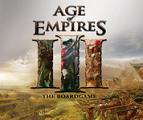
|
ďGood poets borrow, great poets steal.Ē The landscape of the board gaming hobby hasnít looked the same since an unknown game by an unknown designer from an unknown publisher burst onto the scene in the autumn of 2005. More significant than any of those unknowns has turned out to be the unknown mechanic that this mysterious game employed. The concept of worker placement may seem like second nature to those who have joined the board gaming hobby sometime during the past three years (as natural as auctions, negotiation, resource management, action points, or area majority), but itís actually an innovation of the 21st centuryÖ perhaps the innovation of the decade in the hobby. Unlike most other mechanics in board gaming, worker placement is much younger and in its infancy, and thus still being explored and put to use in a various ways. More importantly, itís being put to use by various designers, all of whom have begun to stake their claim to the worker placement universe, each adding their own twist to the concept (for better or worse). As T.S. Eliot may or may not have said, ďgood poets borrow, great poets steal.Ē And great designers from far and wide have thankfully ďstolenĒ the worker placement mechanic, unabashedly adding William Attiaís baby to their own games. Gamers everywhere can be thankful for this free flow of ideas and mechanics, as it has given us a wealth of worker placement games to choose from. Then again, it sometimes seems as if all we have to choose from over the past few years has been each designerís different take on worker placement. But thatís to be expected with such an innovation and its use is certain to drop-off over time as the novelty wears off. In case you havenít gathered yet, the formerly unknown game is Caylus, the designer is William Attia, and publisher is Ystari. Of course none of them are unknown now. -- Click here to continue reading... |

|
I made my Boardgame News debut today with the republication of an edited version of my Survival Games article. You can view a list of my collected works as well as my brief biography on Boardgame News. All of my articles published on Boardgame News will be edited by the site's Editor W. Eric Martin. I will continue to also post all of my articles on this website in their original unedited form. I'm happy to be able to reach a wider readership through Boardgame News and I look forward to working with the site to bring you all of my random thoughts and reflections on the board gaming hobby. -- Click here to continue reading... |
Teaching a board game is partly an art and partly a science. It cannot be precisely explained or routinized, but it can be analyzed and discussed to some extent. While your method of teaching always needs to remain adaptable to the circumstances, the game, and the pupils, there is a basic framework that can be (and should be, in my humble opinion) applied across the board. I don't consider myself good at very many things, but teaching board games is something I seem to have a knack for. It comes with a lot of practice and even more patience. What follows is a list of ten steps that I recommend trying next time you set out to teach a board game. These may not work for every teacher or every game group, but I've tried them out with all sorts of games and all sorts of people, and they work for me. In developing this skill, you should keep in mind that it's one of those things that will go unnoticed if done well, but will quickly call attention to itself if done poorly. A well taught game is a smooth experience that integrates the new players into the game as seamlessly and painlessly as possible without them giving a second thought to the fact that they're having to learn and memorize a plethora of new rules. Here are the steps that I consider essential to teaching board games well, and some words of warning about potential pitfalls that I've seen others fall into on occasion. -- Click here to continue reading...
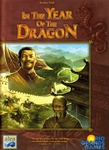
|
From trains, to farming, to a cathedral in Paris, it doesnít matter what the setting is when I have the opportunity to fight the game system itself, in addition to my fellow players. While the game is not a traditional opponent, there are a handful of games where you struggle against the game just as much, if not more, than you struggle against your more traditional human opponents. These are games that certainly donít appeal to everyone because they have a tendency to feel negative and oppressive, which is understandable given the pervasive motifs of famine, bankruptcy, and plague. Nonetheless, this is a loosely defined genre of games that I find myself drawn to more and more. Itís difficult to pinpoint exactly what is so enjoyable about this type of game, but I feel that it has something to do with the fact that you feel a sense of accomplishment once youíve finished even if you lose to your fellow players because youíve hopefully beaten the game system in a way just by managing to survive. Before I go any further, perhaps it would be best to give some examples of games from this genre to help you better understand since itís harder to grasp in the abstract. The six games that immediately come to mind when I think of games in which a significant part of the game involves contending against the game system itself include: Age of Steam, Antiquity, In the Year of the Dragon, La Citta, Agricola, and Notre Dame (with the first three being the best examples). All of these games confront you with famine, bankruptcy, and plague, which are not traditionally what youíd think of as good themes for a fun board game. -- Click here to continue reading... |
Greg Williams recently posed the question over on the BoardGameGeek forums: ďWhy do you log your plays?Ē, referring to the practice of tracking every board game that one plays using a tool available on BGG for doing so. People had all sorts of answers for why they do or donít bother keeping track of every time they play a board game, but the question made me wonder why I bother to go through this process of keeping accurate records of my time spent enjoying this hobby. I realized that many of the advantages of logging your plays stem not from BGG itself, but rather from John Farrellís ďExtended Stats website.Ē This is not the first time Iíve written something inspired by this incredible website, as you may recall my article on the Cult of the New was also based on a new graph feature available on Johnís statistics website that had particularly impressed me at the time. I should mention that to log your own games played, visit BoardGameGeek, search for the game youíve played in the search bar, scroll toward the bottom of the individual gameís page, and in the ďI Played This Game OnĒ box you can set the date and number of times that you played that game, and then click ďSubmit.Ē Upon reading Gregís question, I was prompted to revisit Johnís website and rediscover all the wonderful reasons to diligently log your games played. You can see here the overwhelming wealth of information that is available for my own gaming history, from which I will now pick out some of the more interesting facts to discuss. The Extended Stats website is great for little tidbits of fun information, such as the fact that on average I have played each of the games I own 9.38 times, but itís even better for looking at trends over long periods of time, such as months and years of games played. To celebrate the fact that Iíve been keeping track of my games played for exactly three years now (since June 28, 2005), Iím going to take a look now at three different features of that site that provide a window into the past three years of my gaming history. First, Iíll take a look at a table of my games played by month, including the game Iíve played the most each month and my favorite new game each month. Second, I am going to discuss a list of game designers, ordered by the number of times that Iíve played each of those designersí games. Third, Iíll finish by analyzing the games that have dropped off the radar, meaning games that were played multiple times in one year, but zero times in the following year, to see why those games have dropped of the radar and whether Iíve forgotten some gems in my rush to always try to the next new release. -- Click here to continue reading...
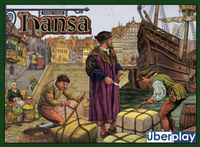
|
Hansa is a game of creating and maintaining loops. There are four possible loops that you need to be aware of and consider throughout the course of the game. They are Reval-Riga-Danzig, Lubeck-Aalborg-Copenhagen, Tonsberg-Stockholm-Kalmar-Copenhagen, and Kalmar-Copenhagen-Danzig. I will consider the strengths and weaknesses of each loop in turn. Regardless of which loop you choose to pursue, you need to be mindful of all of these loops throughout the game, making sure that you donít allow your opponent to easily take control of one of them and exploit its strengths to your detriment. -- Click here to continue reading... |

|
John Pizer, Joseph Lane, Madame, Spring-Heeled Man, and Abberline. These are the new suspects in the Whitechapel district of London. The night still covers the gloomy alleys with darkness and only a few corners are still illuminated by the gaslights, and the mood is set for a tense game of Mr. Jack yet again. Thirteen investigators have now gathered to catch the cunning villain, who is impersonating one of them. The five new characters introduced by the Mr. Jack Extension breathe new life into the game, reinvigorating the game play and making for a fresh experience. Bruno Cathala and Ludovic Maublanc, the original designers of Mr. Jack, along with Steve McKeogh and Arnaud Fillon, winners of the contest to submit ideas for new characters and abilities, have added a nice mix of ideas to the game that both significantly expand the universe of possibilities but still stay true to the spirit of the game and feel familiar. Balancing and achieving those opposing goals is the key to making a great expansion, or should I say extension. The Mr. Jack Extension is one of a select few expansions that successfully merges innovative concepts into a base game while still maintaining the balance and flow of the original. -- Click here to continue reading... |
Antiquity is brutal. That is simply the most obvious adjective to describe it. Antiquity is unrelenting, vicious, and merciless. It is a game of pollution and graves. It is a game of treading water in a small pool teeming with piranhas. It is a game of survival. And itís a pure joy to play. The introduction to the rules puts it best:
"These fields no longer yield grain the way they used to," complains the farmer. "And people these days don't like to eat plain bread any more. Why donít we start farming olives, like our neighbors?" The cart-driver nods: "We could, but there is no more land. Ever since those city folks started worshipping San Giorgio I have to travel further and further to new building sites. I'm on my way now to that new inn. I'll change horses there. Then Iíll take this load," he gestures towards the pile of wood in the cart with his head, "to the sea beyond. Gonna start some fisheries there. The seas in the South have all been polluted, and the city folks need their fish. You know how it is." As the cart starts moving again, the farmer nods his head in reply, then takes his sickle to harvest the last bushels of grain, growing between the stumps of what used to be a lush forest." -- Click here to continue reading...
Itís counterintuitive but true that making a board game freely available to play online may in fact lead to increased sales. I had been pondering this thought for some time now, but was recently impelled to compile all of the instances in which this was the case for myself. I have only just now begun to realize how many games I have purchased as a direct result of being exposed to playing them online. It is a sizeable percentage of my collection indeed. This vague notion was recently crystallized when I read a discussion between Eric Endres and Bruno Cathala available at this link. Bruno is one of the designers of Mr. Jack in 2006 and the Mr. Jack Extension in 2007, along with a host of other well-known games (e.g., Shadows over Camelot, Cleopatra and the Society of Architects, Mission: Red Planet, Queenís Necklace). Eric points out that "it should be noted that providing a free online version of a game doesn't necessarily hurt sales, and the opposite may even be true. Having played the online version of Mr. Jack, it is now on my 'must have' list to buy soon. The same thing happened when I discovered Tikal at spielbyweb. I bought that the first chance I had . . . I know it sometimes may seem counterintuitive to selling something by providing it for free. And sometimes it is, but in this case I think it definitely features the game in a way that will help generate buzz and sales for the board game version." I strongly agree, and would go even further in emphasizing how much I think making a game available to play for free online can help improve sales. -- Click here to continue reading...
Matthews' Masterpieces ComparedApril 22, 2008 |
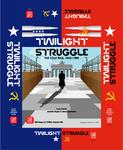
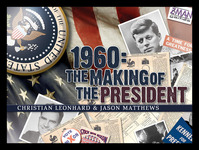
|
ďNow the trumpet summons us again, not as a call to bear arms, though arms we need; not as a call to battle, though embattled we are Ė but a call to bear the burden of a long twilight struggleĒ Ė John F. Kennedy
Jason Matthewsí first published game was Twilight Struggle in 2005, and based on its success, he went on to publish the strikingly similar 1960: The Making of the President in 2007. Having played the former 9 times and the latter 5 times, Iím now going to endeavor to distinguish and critique these two games. My thesis is essentially that 1960 may be the superior game in terms of its mechanics, but that Twilight Struggle is far more engaging, tense, and enjoyable to play. Basically, 1960 introduces two key mechanics into the card-driven gameplay of this system that are definite improvements, but at the same time 1960 removes the mid-game scoring that makes Twilight Struggle an edge-of-your-seat affair. -- Click here to continue reading...
Click here to read the full article...
January can only mean one thing, another Five & Dime List of course. Every list has to have a twist to make it unique, and since I didnít do one last year, this one will be a comparative list that highlights how many times I played each game not only in 2007 but also in 2006. This means Iíll be able to see whether a game is on the rise or interest is declining, and maybe realize that a game I used to enjoy plenty in 2006 didnít see enough table time in 2007.
Before we get started with the list, letís begin with a few stats. Since I started tracking games played in June 2005, I have 1,834 plays (note that this number is slightly inflated by the fact that I log both the base game and expansion if I play a game with an expansion). Broken down by year, there were 357 plays in the latter half of 2005, there were 786 in 2006, and 658 plays in 2007. So it looks like 2007 saw a bit of downturn in gaming, with 128 fewer games played, which is not surprising given the fact that I was a full-time student in 2006, and graduated five months into 2007, so I had to study for the Bar exam and begin working full-time. This has decreased my game playing opportunities slightly, but thankfully not nearly as much as I had feared, so Iíve played plenty of great games in 2007 as youíll see.
Click here to read the full article...
I have recently become fascinated by a relatively new feature on John Farrell's Extended Stats website for BoardGameGeek users. This feature doesn't even have a name yet, but is described on the site as a graph depicting the "proportion of games designed in a particular year played each quarter, i.e., how much do you play new releases?" It's a lot easier to understand this type of graph by actually looking at it than it is to describe it in words, so continue reading to see some examples of what I'm talking about.
For people who are members of BoardGameGeek and log their games played on that site, this graph appears to be a great way to see whether you are succumbing to the "Cult of the New." The "Cult of the New" is a concept that has been discussed a fair bit on BoardGameGeek and on various gaming podcasts, and is basically the notion that many board game enthusiasts are constantly searching for the next great thing in gaming, always buying new games, and therefore never replaying the ones they already have. Seeing as I just ordered 11 games immediately following Essen Spiel two months ago and have my eye on at least 4 more new Essen 2007 games, this is certainly something I've been pondering.
Click here to read the full article...
Sometimes it feels like I spend as much time trying to decide which game to play as I do actually playing games. This is the inevitable downside of having a collection that has grown out of control over the past few years. With the great variety of over 150 games comes the great dilemma of picking one to play when the opportunity arises. I know I'm not alone in this, as I have seen a variety of discussions on this topic and attempts to alleviate the problem. W. Eric Martin wrote about this problem recently in his article "570 Games (And Nothin' to Play)," in which he discusses an intriguing book entitled "The Paradox of Choice: Why More Is Less." In an attempt to solve this problem, Tom Kiehl invented the game "I Don't Know, What Do You Want to Play?" This "game" involves a website that will create a personalized PDF for you including a card for each game in your collection. The "game" gives everyone a hand of cards representing games in your collection and has rules for playing those cards to determine what will actually get played. Another method for determining which game to play that I have seen proposed is to allow each person present to pick one game, give everyone a playing card from 1 to 4 (assuming four people are present so four games have been selected), and allow everyone to place one card on each game, then tally up the totals and the game with highest total gets played. These ideas are all well and good, but I thought I'd add to the growing trend of new methods for selecting which game to play by creating a handy chart.
Click here to read the full article...
Spiel des Tom? Deutscher Spiele Tom? The best I could come up with was "Games of the Years" but I suppose it's the most descriptive and clear of the bunch. With the relatively recent announcement of the International Gamers Award (Through the Ages and Mr. Jack), Deutscher Spiele Preis (Pillars of the Earth), and Games Magazine Game of the Year (Pillars of the Earth), I decided it was high time for me to go through the arduous task of picking my favorite game from every year... stretching all the way back 131 years to good ol' 1876. You'll be surprised to know that somehow I wasn't able to come up with a Best in Show for every year, so I ended skipping a couple years. Thus, I present you with 18 Games of the Years. Please note that the the years are based on the years in BGG database, so for example, El Grande and Settlers both fall under 1995, despite the former winning the SDJ in 1996, and Age of Steam falls under 2002 despite winning the 2003 IGA.
You'll notice that these 18 games differ a fair bit from my Top 20. In fact, 8 of the Top 20 games were bumped because they were released in competitive years. The Top 20 games that failed to make the cut by a quirk of fate due to their release date include: Goa, Caylus, Carcassonne, Louis XIV, Reef Encounter, Settlers of Catan, Princes of Florence, and Wallenstein.
Unsurprisingly, the winning designer is Reiner Knizia with 3 Games of the Years (in contrast to his zero SDJ's of course), and Wolfgang Kramer comes in second place netting himself 2 Games of the Years (with my two favorite games - El Grande and Java). Interestingly, Rudiger Dorn failed to capture a single Game of the Year, but nonetheless had an impressive showing with 4 second-place finishes with Arkadia, Louis XIV, Goa, and Traders of Genoa. An impressive crop of games that got barely edged out in 4 different years.
Click here to read the full article...

|
Disdain for dice and games that use them is clearly a common feeling among eurogamers. Itís not surprising, given the fact that most of us have embraced eurogames as the luck-minimizing and strategy-maximizing alternative to traditional American games, such as Monopoly and Risk. However, after playing Martin Wallaceís Byzantium for the first time the other day, it struck me how heavily some of the most treasured eurogames rely on the use of dice. Of course, while Byzantium entails a significant amount of dice-rolling, it is not one of these ďmost treasuredĒ eurogames that I speak of, given the fact that it falls outside the Top 300 on BoardGameGeek (although I found it to be quite enjoyable and perhaps underrated, although more plays will be necessary to determine that for sure). However, the groans heard round the table when the dice didnít go someoneís way (or even more extreme, failed to roll a single hit on five dice for one person, while rolling four hits on four dice for their opponent) led me down the garden path of pondering the role of dice in eurogames. |
Click here to read the full article...
The creativeness and ingenuity of gamers continually amazes me. This is especially true when it comes to the countless variants that are have been created for the most popular games and even many less well-known games. Unlike rules variants, which Iím sure require a good deal of time investment in their own right, it is the alternate maps for various games that I find particularly impressive, given the enormous amount of time that must go into conceiving and playtesting such creations. With the tons of new Age of Steam maps that come out at Essen each year, speaking of which, check out Ted Alspachís Board 2 Pieces from October 19, 2006, and this year being no exception, I began to ponder just how many Age of Steam maps have been created. This led me down the garden path to wondering just how many Ticket to Ride and Power Grid maps had been created as well because even though the number of maps for those two games combined pales in comparison to the number of Age of Steam maps, there are still an incredible number of maps for each of those games. I then set out to create a table for each of these three games, depicting a photo of the map, the name of the map, the designer, and a link to where you can find out more information about each map. How did I pick these three games? Thereís no particular reason; theyíre just the games that came to mind as having a large number of variant maps, but feel free to let me know if Iíve overlooked a game that should have been included in addition to Age of Steam, Ticket to Ride, and Power Grid. In fact, please let me know if there are any omissions or mistakes, which Iím sure there are given the size of this project. As of uploading this project on October 10, 2007, I have found and catalogued 103 maps: 62 Age of Steam maps, 27 Ticket to Ride maps, and 14 Power Grid maps. They have been sorted alphabetically in the following tables. Finally, while it doesn't have anything to do with this specific project of mine, I just don't feel right writing about creativeness in the creation of maps without at least mentioning Mark Mahaffey's Mapology Portfolio, which you owe it to yourself to check out so you can see his amazing map creations.
Click here to read the full article...
C & C Game FactoryOctober 5, 2007 |
  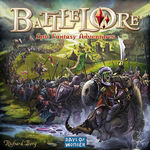
|
Whether Iím engaging in battle with British tanks, Carthaginian elephants, or dwarves and goblins, unfortunately I canít count myself among the innumerable fans of Richard Borgís Commands & Colors series of board games (i.e., Battle Cry, Memoir í44, Commands & Colors: Ancients, BattleLore). However, before I launch into articulating my reasons for going against the grain when it comes to this highly touted quadrilogy of games, let me start by emphasizing that I donít believe that any of these are bad games, but rather that theyíre merely okay and I fail to see whatís so great about them. I should also admit that Iím certainly no expert on this series of games, and since three of them are ranked in the Top 50 on BoardGameGeek, Iím happy to admit that I may just be missing something. Then again, Iíve played the games in this series 4 times (Memoir once, Ancients twice, and BattleLore once), so I feel like Iíve given it a fair shake, and have nothing to show for it except a perplexed bewilderment at its incredible popularity.
Click here to read the full article...
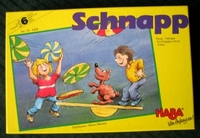
|
We all know about the great publishers like Rio Grande Games, Mayfair Games, Fantasy Flight Games, Z-Man Games, Hans im Gluck, Kosmos, Amigo, Ravensburger, Alea, Queen, Uberplay, etc. and their many wonderful light, medium-weight, and heavy games, ranging all the way from Fjords and Coloretto to Caylus and Puerto Rico. However, Iíve recently had the pleasure of playing games that actually fall outside that spectrum, despite its incredible breadth. Haba and Splotter Spellen are the two publishers Iím speaking of, and while the former publishes ultra-light games (ostensibly designed for children), the latter publishes ultra-heavy games with countless chits and hour upon hour of brain-burning gameplay. Whatís incredible is that both publishers and their games are fabulous! I definitely believe that the Haba games that fall outside the traditional eurogame spectrum as being even lighter than the traditional fillers (i.e., For Sale, Coloretto, No Thanks, Hey! Thatís My Fish!), and the Splotter games that fall outside the traditional eurogame spectrum as being even heavier than the traditional meaty games (i.e., Caylus, Puerto Rico, Tigris & Euphrates, Goa) complement each other quite well, and would actually do very well paired together for a game night. |
Click here to read the full article...
Have you ever been mid-conversation when you blurt out (or if you have more restraint than me, have the urge to blurt out), "Hey! There's a GeekList about that!"? Perhaps it's one of the many signs of spending too much time on BoardGameGeek (along with excelling at all of these contests), but I have to admit it happens to me on a regular basis... and I'm beginning to wonder who else this happens to or has happened to, and in particular, am looking for examples (and links to the GeekList if you can find it).
The most recent time was when I was teaching Notre Dame to few friends. After explaining that you started with 2 "money" and used 1 "money" to bribe a person each turn or could use your "money" to place cubes on the cathedral, I got the strangest question. They were like, "Money? But what's it actually called in the game?" I stopped to think for a second and realized I had no idea. So we stopped the explanation for a while to check the rulebook and discovered that the currency was in fact gold coins. Upon this somewhat anticlimactic discovery, I had the insuppressible urge to shout out, you guessed it, "Hey! There's a GeekList about that!"
Click here to read the full article...
su∑per ('sŁ-p&r) adjective - exhibiting the characteristics of its type to an extreme or excessive degree
fill∑er ('fi-l&r) noun - a piece used to cover or fill in a space between two parts of a structure; material used to fill extra space
Super Filler - Coined and defined by Mike Siggins in the Gamer's Notebook on October 25, 2006:
"The Super Filler is really a subtype of game that I used to call The Middleweight. It is more than a 20 or 30 minute starter, but it does not amount to a main course in weight or play length. The game is 'straight in,' has plenty of decisions, a fair amount of depth, but importantly it is very quick to play. Almost always under an hour, and leaving you feeling as if you have played for longer. In many ways it is an important species of German Game because it can avoid many of the traps Ė too light, too random, too boring Ė and appeals to most types of player. And those that donít like it can see that it wonít last that long. A typical Super Filler is Mykerinos. I would put Yspahan, Taluva and Gheos in the same group."
I am on a quest to find an elusive subtype of this subtype of game, specifically Super Fillers that are best suited for 2 players. I want to find Super Fillers that are great for 2 players, not games that simply work for 2 players. This quest began after trying the "typical Super Filler" Mykerinos and finding that even though it is a good game, the two-player version did not appeal to me due to the "artificial third player" rule (also seen in Alhambra, Acquire, and Louis XIV). Consequently, I want to find other typical Super Fillers, but only those that shine as two-player games. As Mike explained, these should be games that take around 45 minutes to play, and certainly no more than 60 minutes.
Click here to read the full article...
Patience is normally a virtue, whether in gaming or not. You don't want to commit those meeples until you draw the right tile in Carcassonne. You certainly want to save your cards in the Commands & Colors series until they'll be most effective. You've got to time your Bonus cards just right in Princes of Florence to use them on the correct work. However, this is a list of games where patience is not always a virtue. These are games where you're given one, and only one, chance to use an ability that will give you the opportunity to decimate your opponents, but it's clear that if you waste it too early then you won't maximize this ability's potential. However, the lesser known side of this equation is that if you wait too long to use such an ability then you won't get to use it at all! This is my problem. I treasure such abilities even more than their great worth and end up never finding the "perfect" opportunity to use them, and consequently often end up not using them at all (which is certainly worse than using them too early). What on Earth am I talking about? Perhaps a few examples will make it all clear...
What powerful game abilities are you often stuck with not having used at the end of the game because you waited too long to find the perfect opportunity to use them and ended up not using them at all?
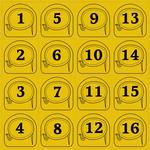
|
Ra - 13 Sun - Since this phenomenon first manifested itself in a game of Ra, it's known in my group as the "13 Sun" (since we play 3-player more often than not). So anytime another game has something analogous, it's called the "13 Sun." Am I the only one who overvalues the 13 Sun and often ends up not using it for an entire round when I have it (and consequently prefer to have the 11 or 12 if possible even though they're empirically worse) or are others prone to this excessive patience? |
Click here to read the full article...
Click here to read the full article...
Click here to read the full article...
Note: This article assumes the reader's familiarity with the fictitious GeekGold economy at the BoardGameGeek website.
Have you ever wondered how much all that GeekGold you've been collecting from GeekMod or been giving away generously through tips is really worth? If you figured it was a worthless virtual currency, then think again! Turns out your GeekGold is worth more than the Mexican Peso, Japanese Yen, Indian Rupee, and a whole host of other national currencies.
From this table summarizing all of the GeekGold exchanged for US currency via Auctions, you can see that since the Auction feature was introduced in July of 2005, 10,179 GeekGold has been exchanged for $1,444.38 for an average value of 7.05 GeekGold per Dollar, making each GeekGold worth a little over 14 cents. It's also impressive that in just over 4 months, over $846 has been spent purchasing GeekGold via the Auctions in 2007.
Click here to read the full article...
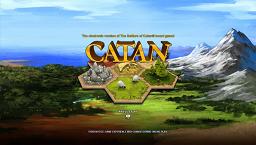
|
The recent review of Settlers of Catan for the Xbox 360 written by GameSpot was somewhat eye opening. It was actually a pretty kind review that didn't criticize the game as much as I'd feared (based on the Google Current lampooning of Board Games with Scott) and the UK Tabloid making fun of Jon Power), and the explanation of the rules in the review was pretty well done. However, I must say that the review reminded me how the "uninitiated" tend to view the idea of playing board games for fun. I can sometimes have a narrow view after spending a fair bit of time on this site, which makes me perceive fine differences between various strategy board games as wide gulfs, when they're all actually exceedingly indistinguishable from a laymen's perspective. It's odd to be reminded of that. My favorite line was when GameSpot called Settlers a "slow-pouring strategy game" and said "it's a fairly esoteric turn-based strategy game with a dry sensibility." Compared to many of my favorite strategy games, I'd never in a million years have thought of Settlers as "slow-pouring" and certainly not as "esoteric ... with a dry sensibility." Sounds more like some of my other favorites like Java, Caylus, or Age of Steam, heh, but I guess even the game we all consider the classic gateway game is slow-pouring, esoteric, and dry to others. |
Click here to read the full article...
Nine games in three days. Four heavy games (Libertť, Imperial, Die Macher, Antiquity) and five light games (StreetSoccer, Lord of the Rings - The Confrontation: Deluxe Edition, Bamboleo, eBay Electronic Talking Auction Game, Chairs). It all added up to a fun and brain-burning weekend.

|
Libertť Ė Radical Landslide Crushes Royalists - I had been wanting to try Libertť for over a year now, but itís out-of-print and I didnít know anyone who had a copy, so Iíve been patiently waiting to give this game a try for a long while. I was originally attracted to this game for three reasons. First, the photos of it on BoardGameGeek intrigued me. Second, it seemed like an innovative twist on the area control mechanic. Third, itís by Martin Wallace of Age of Steam fame. After finally reading the rules for the game, I was very eager to give it a try. I especially liked the idea of two alternate ending conditions, which could trigger the end of the game prematurely, causing you to ignore the victory points that players had accumulated and instead look to an alternate winning condition. The basic idea is that each player can deploy Royalists, Moderates, and Radicals to control any of the 27 different regions of France. Over the course of four turns you aim to have the most control over the faction that ends up being the most powerful in the country by playing cards to lay down blocks of a particular faction. What makes the game really interesting are the two alternate ending conditions, which can occur if either the Royalists or the Radicals gain a certain amount of power, in which case victory points are ignored and the winner is determined by who controls the most of the faction that triggered the end of the game. This element make the game especially engaging because in addition to the traditional concept of area control, you have to always keep on eye on the different ways the game can end, and you have the possibility of manipulating the game (and your opponents) to achieve whichever of the three ending conditions suits you best. I should confess that Iím inclined to be a fan of just about any area control game you stick in front of me (such as El Grande, San Marco, and Louis XIV among many others), but that being said, Libertť is certainly another in this long line of fantastic area control games. |
Click here to read the full article...
Dune Session: The Many Faces of the Desert PlanetFebruary 27, 2007 |

|
I had the opportunity to play the board game Dune three times over the past month with different groups of people and was struck by how remarkably different all three games were. Each game of something like Tigris & Euphrates, El Grande, or Age of Steam is different (otherwise I wouldnít keep playing them), but they tend to follow the same general flow and pattern as the previous game, with a clear beginning build-up, middle expansion, and end-game final push. Dune, on the other hand, did not conform to any of my board game expectations, even entering my third game after having played twice. This is a very good thing for a number of reasons. First and foremost, Dune holds a unique position in my collection, not only because itís the only great game for six players that Iíve discovered, but also because itís so different from anything else I own. Second, Dune isnít just different from the other games I own, but also different from itself, with each game only vaguely resembling the previous games. This is great for the obvious reason of increasing the gameís replayability over the years, as long as I can continue to find five other people with four hours to spare. So what set each of my three games apart from each other so distinctly, letís take a closer look at the individual games themselves since generalities about Dune give a very incomplete picture at best.
Click here to read the full article...
I should warn you now that this column is going to be even more subjective than most, which is saying something considering how unfounded my opinions generally are. Most people can probably agree that the number of players that a game should be played with doesn't always (maybe even often) line up with the number of players that the game says it can be played with on the box. Itís not hard to realize that the publishers want a game to appeal to as broad an audience as possible (even for such a niche market as German-style board games, or designer games as Alan Moon advocates), so itís not a hard logical step to realize that games that claim to allow two to six players should generally sell better than games that only claim to allow three to four players. Why Settlers didnít disabuse everyone of this notion is beyond me, but I digress. What everyone doesnít agree on is what the optimal number of players for each game actually is, assuming it doesnít match what the publisher claims. Sometimes its easy to find out what the designer thinks is the optimal number of players, as is the case with Age of Steam because Martin Wallace said in an interview by Tom Vasel that the game works best with four or five players, with only certain variant maps working best with three or six players, despite the fact that the base game says three to six players on the box. The game clearly ďworksĒ with three players, and also with six players, but this is about what number of players the game works best with. However, most of the time itís harder to discern what the optimal number of players for a game really is because the designer doesnít tell you and the publisher expands the range (which I recognize is a rational business decision).
Click here to read the full article...
Metro, Entdecker, Australia... What do these three things have in common? If this were a game of Tribond, this would be the only question that I could actually get right. Have you figured it out yet? The answerís not that I traded away all three games because Iíve only traded away two of them, yet. If you guessed that all three of these games limit a personís color selection based on the number of players in the game then you are correct. As is probably clear from the title, this is a big pet peeve of mine. This has been the subject of repeated GeekLists on BoardGameGeek, cropping up every couple months, in which users attempt to list all of the games that share this more-annoying-than-it-ought-to-be trait. Iíve been meaning to write about my disdain, no... contempt, no... hatred, yes thatís it, of this phenomenon for a while now, but finally got the motivation after reading a recent thread on BoardGameGeek asking people what color they prefer to play. I realized that most gamers have a strong preference for what color they play; at least most gamers who are passionate enough to read and post on BoardGameGeek (ignoring the response bias that inevitably accompanies such an informal poll). As a minor aside, I was stunned at the number of people who always play yellow when itís available for the exact same reason I do (i.e., we think itís generally unpopular and therefore no one else will want it), how odd! However, I digress, back to the object of my loathing: games that limit a personís color selection based on the number of players in the game.
Click here to read the full article...
You like me? You really like me! Yes, it's true, I had my very own Sally Field moment today when the Board Game Internet Awards were announced this morning on Boardgame News and BoardGameGeek. You can see the full list of winners on the Gone Gaming blog. Awards were given in a wide variety of categories, such as best publisher site, best game club site, best online gaming site, best blog, best podcast, best review, best session report, best strategy article, and best humurous article. I am very honored to have been recognized in three of these categories, especially given the amazing amount and quality of other people's work that was nominated.

|
Best Blog - I am very flattered to share the Best Blog award with the Gathering of Engineers blog. I hope that receiving this spurs me to write more because I have a long list of ideas for things to write about, and I seem to add five things to the list for every idea that actually comes to fruition. I'm never really sure if anyone reads this, so I mainly write for myself, but it's all the better if anyone else happens to enjoy it too. I must say that the blog field was extremely crowded with 13 nominations this year, and many were far more deserving than myself. In particular, I highly recommend that everyone check out Gamer's Notebook by Mike Siggins, Chris Farrell's Gaming Blog, and Mike Doyle's Art Play. Those three are really the cream of the crop in my opinion, and well worth checking frequently. You can find the full list of nominees in the Gone Gaming archives if you want to find even more excellent blogs. There's also an index of blogs available in my Links section below, plus a listing of blogs on the BoardGameGeek wiki. |
Click here to read the full article...

|
After reading so much about Crokinole on BoardGameGeek, I finally decided that I had to have it. I read countless threads to research where to purchase a high quality board, and came up with a list of four possibilities. First, there's Wayne Kelly's (a.k.a. Mr. Crokinole) boards. Second, there's Willard's boards. Third, there's Miracle Venture's boards. Finally, there's Carl and Stan Hilinski's boards. While all four retailers had received high praise on BGG, I finally settled on a Hilinski board because the idea of owning a unique, one-of-a-kind board was just too great too pass up. I not only really liked the slideshow of past boards created by the Hilinski brothers, but I also liked the attitude of their website, about how they make boards for fun. I decided that I really wanted to patronize their business, and am glad that I did. I opened my new Hilinski board on Christmas morning, and despite my exceedingly high expectations, it has surpassed everything I hoped for. I've played it an astounding 42 times in the 20 days since I got it, and absolutely everyone I've introduced to the game has loved it. The Hilinski boards truly are works of art, rather than merely a game, and I'm currently figuring out where to hang my board on the wall. Here is a list of all of the photographs from the BGG image gallery that are identified as Hilinski boards in their captions, including a photo of the board and name of the board. |
Click here to read the full article...
It happened to the movies, it happened to video games, it's happening to board games... Sequel Mania. It makes sense financially to try to milk a product line for all its worth until its bone dry, since it's a bigger risk to try something new, but it sometimes leads to amusing results as you see how far they're willing to take a concept in an effort to avoid coming up with something new. What do you foresee in 2007? Let's all look into our crystal balls to predict the next big reinvention of the wheel. And we'll skip over the next Catan Adventure, Ticket to Ride map, and Carcassonne meeple; we can take those for granted since they're obvious enough even for amateur fortune tellers.
Click here to read the full article...
Review: Power Grid - Friese's Fiddly Funkenschlag FlopNovember 21, 2006 |

|
I generally agree with the masses, the BoardGameGeek masses that is. I heartily concur with the thousands of people who have voted Tigris & Euphrates, El Grande, Caylus, Ra, and Age of Steam into the Top 10 on BGG. My tastes and those of BGG at large very rarely diverge, but Power Grid stands out as the most prominent instance of this rare occurrence. Let me start out by saying that I have a profound respect for the design of Power Grid. I think that Friedemann Friese did an outstanding job of interweaving various clever mechanics into a well-balanced game. The supply-and-demand market system for resources is particularly nicely done, and an admirable feat in game design. However, I analogize the respect I have for Frieseís design to the respect I have for classic games such as Chess and Go, or the respect I have for classical music such as Beethoven or Mozart. To be clear, I donít think that Power Grid nearly rises to the level of any of those four masterpieces, but the similarity lies in the fact that while I respect and appreciate the design of each, I simply do not enjoy playing (or listening to) them whatsoever. I donít intend to write many negative game reviews; not because I have something against them (they can actually be quite useful to people one a limited budget), but rather just because I rarely find a game I donít like. In this case though, I think it may be worthwhile for me to explain the shortcomings, as I see them, of Power Grid.
First things first, what will you get in the box and what is it going to cost you? Power Grid comes with a double-sided game board, 132 wooden houses (22 in six different colors), 84 wooden resource tokens (representing coal, oil, garbage, and uranium), paper money, 5 rules summary cards, and 43 power plant cards. Power Grid retails for $44.95, and is published in the United States by Rio Grande Games. The components of Power Grid are generally very good. The double-sided game board is a nice touch, and certainly something that Iíd like to see more games (e.g., Ticket to Ride) include to increase replayability. The board has Germany on one side and the United States on the other, which provides excellent variety that many eurogames with maps lack. The paper money leaves something to be desired, but could easily be replaced by poker chips. Finally, one minor complaint with the components is that the wooden resource tokens representing oil are completely round (as opposed to the garbage tokens which have flat edges), and consequently tend to roll off the table quite frequently. Nonetheless, the components are generally well done, especially the double-sided game board.
Click here to read the full article...
Wallenstein Session: Pappenheimer SurpriseNovember 18, 2006 |
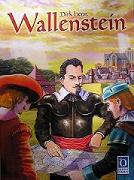
|
The year was 1618 and the Thirty Yearsí War had just begun. The Peace of Westphalia was decades away, and there was much bloodshed and revolting to be done in the meantime. Five mercenary leaders came together to lay their claim to the regions of Brandenburg, Sachsen, Kurpfalz, Bayern, and Osterreich, but only one would emerge victorious after two vicious years and two lean winters.
Albrecht von Wallenstein lay his claim to the East, building strongholds in Regensburg, Ober-Osterreich, and Nieder-Osterreich, but still spreading out forces far to the North in Neumark and far to the West in Breisgau. Count Gottfried Heinrich von Pappenheim ordered his Pappenheimers to fortify the North, deploying forces to Holstein and Mecklenburg, but stretching his lines further South into Wolfenbuttel and Hessen-Kassel. Count Johann Tserclaes von Tilly formed a chain across the map, stretching all the way from Mahren in the East to Baden in the West, and North into Lausitz, Kursachsen, and Vogtland. Count Ernst von Mansfield concentrated his forces in the West, claiming almost all of Kurpfalz, but leaving a lone army in Schlesien in the far East. Finally, Gustavus Adolphus, the mighty King of Sweden, deployed his forces across the board, from Anhalt in the North, to Gft. Mark in the West, to Salzburg in the South.
The stage was set for the mightiest battle of the 17th century. All of the leaders divined that the year was ripe for a good harvest in Sachsen, but poor harvests in both Osterreich and Bayern, along with the possibility of the peasants becoming weary of war and trading in their swords for ploughshares.
Click here to read the full article...
400 lucky BGGeeks just got done with four amazing days of gaming at what sounds like the most wonderful convention ever, but that doesn't mean that the rest of us can't dream. So what would you have played if you'd gone? My list is a mile long...

|
After arriving late Wednesday night, my first game as soon as the doors opened on Thursday would have definitely been the Notre Dame prototype. I would tracked down Valerie Putman faster than a bloodhound and begged her to let me try out Alea #11 until she took pity on me and caved. Stefan Feld may have found few fans with Um Ru(h)m und Ehre, but it sounds like he's likely to find a boatload with this upcoming release. I know it's silly, but if it says Alea on the box, I just can't resist (I mean I already admitted earlier this year that I'd buy a turnip peeler if it was made by Alea, and I don't even like turnips). Larry Levy's right that Alea never really fell from grace to begin with, but even if this isn't technically a return to the glory days as Rick Thornquist suggests, I'm still psyched! |
Ah yes, I forgot to mention, that when I was registering with Aldie and his lovely wife, I didn't pick one of those plain ol' blue tickets, or whatever other colors there are, for some "regular" prize like a measly copy of Shogun or Die Macher, but instead I picked out a shiny golden ticket! They didn't even know it was in there, that's how surprised they were. Well, it turns out the golden ticket winner got copies of Roads & Boats, Full Mťtal PlanŤte, Poisson d'Avril, and Hannibal: Rome vs. Carthage. Needless to say, I was pretty psyched about my golden ticket (even if it, and one of these games, don't exist).
Click here to read the full article...
Review: Carcassonne as heavy as Tigris and Caylus?!November 1, 2006 |
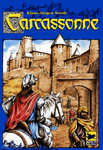 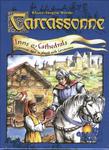 
|
Carcassonne is a tile-laying eurogame, which was designed by Klaus-Jurgen Wrede in 2001 and was awarded both the Spiel Des Jahres and the Deutscher SpielePreis that year. Carcassonne is often touted as one of the best ďgatewayĒ games (along with Settlers of Catan and Ticket to Ride) for introducing non-gamers to the hobby of strategy board games, and itís true that the game can definitely be used as a ďgatewayĒ game. However, this review is meant to explain how Carcassonne can be played as a deep and heavy game along the lines of Tigris & Euphrates and Caylus. If played under the following conditions, Carcassonne can become a highly strategic and extremely replayable game with no more luck than a game of Tigris.
First things first, what do you get in the box? For a retail price of $24.95, you get the following components: 72 land tiles, 40 wooden followers (a.k.a. ďmeeplesĒ), 1 scoring track, and 1 instruction booklet. The components are not spectacular, but they get the job done very well and donít leave anything to be desired. Although the scoring track is not necessarily the best way to keep score because it can get bumped during play and is not as reliable as paper and pencil. Iím going to reference two expansions for Carcassonne below, so I will mention their price and components here as well. First, Carcassonne: Inns & Cathedrals (a.k.a. I&C) retails for $14.95. I&C comes with 18 land tiles, 6 scoring tiles, 8 gray followers, and 6 large followers (a.k.a. ďgianteeplesĒ). The new land tiles match the originals nicely, the scoring tiles and gray followers are essentially useless, but the gianteeples are crucial to the game as discussed below. Second, Carcassonne: Traders & Builders (a.k.a. T&B) retails for $14.95 as well. T&B comes with 24 land tiles, 20 trade goods, 6 builders, 6 pigs, 1 cloth bag. All of these components are up to par with the original and are necessary additions to the game. Both of these expansions are a bit pricey, but can be found at discount online retailers for $9.72, which is more reasonable, and are both integral to fully enjoying the game as I think it should be played.
Click here to read the full article...
Another Essen Spiel has come and gone, meaning that it's time to flood the Internet with innumerable post-Essen reports on all the new game releases. This is only the second Essen since my obsession with eurogames began, but I've read so much coverage of the convention that I figured I might as well jot down my thoughts. I've read anything and everything about Essen on BoardGameGeek (see the 122 threads and geeklists on BoardGameGeek). I've read and re-read Rick Thornquist's coverage at BoardgameNews. I've enjoyed the report by Mike Siggins as usual, and scoured more blogs than you can shake a stick at, such as this one, and this one, and this one, and of course the masterful Kulkmann's G@mebox, not to mention monitoring the constantly fluctuating, and constantly dubious, Fairplay rankings.
Last year's Essen was singularly defined by Caylus. Essen was Caylus and Caylus was Essen. This year seems, at least from the other side of the pond, to have a very different tenor, as numerous games are fighting for the spotlight, and none yet stands head and shoulders above the rest. So it can be difficult to figure out what to be hopeful about, what to look forward to, and what to avoid or make sure to try before buying. So what am I looking forward to now and what am I planning to avoid:
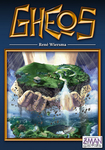
|
GHEOS is certainly my most anticipated game now and the game that I am most likely to buy without trying first. As evidenced by my personal Top 20 list, Tigris & Euphrates and Carcassonne are my two favorite games, so the innumerable comparisons between Gheos and those two games do nothing but bolster my desire to play the game. |
Click here to read the full article...
My fully updated collection list with individual comments on each game can always be found on my profile at BoardGameGeek, but here's a nice photo collage of my collection over the past year. One of the forum threads that I started a while back on BoardGameGeek dealt with game storage issues, specifically Crushing vs. Warping, so I'm always keen to hear more comments on how people store their collections. Here's how I've stored mine over the past year:
Click here to read the full article...

|
With the recent announcement of the winners of both the International Gamers Awards (IGA) and Deutscher Spiele Preis (DSP) for 2006, I thought it would be interesting to see which award most closely matched my game ratings on BoardGameGeek, so that I could know which award would have the best predictive power for the purpose of finding more games that I'd enjoy. I know that awards are a hotly contested subject, especially since the announcement of the Golden Geek, with many people finding the proliferation of awards unnecessary and/or arbitrary. I don't want to get into the debate really, except to say that I personally think the awards are very useful, especially for new gamers just starting out to build their collections. While awards are not as useful for longtime gamers and active BGG users who follow the frequently changing rankings and read numerous reviews, I think one of the most useful methods for finding solid games when you're just starting off in this hobby is to look at which games have won awards and been nominated for many awards. Back when I started into this hobby and discovered the Spiel Des Jahres, I made it my goal to get each of the winners, but as my tastes have changed and evolved, I've abandoned that goal and instead have begun to pay more attention to other awards, such as the DSP and IGA. I decided to take a look at the five awards listed on FunAgain in order to see which award matches my ratings most closely. This is not meant to criticize any of the awards, I think the more awards the better, but rather just an experiment to see which award matches my current tastes best. If this is something you're interested in trying then feel free to post your results as comments below. Without further ado, here are the highly anticipated results, with the mean and median rating that I give to the games I own that have won the following five awards: |
Click here to read the full article...
As the timeless childhood adage (and one of the best examples of sour grapes) tells us: First is the worst, Second is the best. However, this rarely holds true in the world of board games.
Eurogames provide us with an amazing array of methods for choosing the starting players, from youngest, to oldest, to the person who went swimming most recently, to the upcoming person who can refrain from laughing the longest (and no this is not going to be yet another list about ways to choose the starting player, for that go here). But whatever the method for choosing the starting player, no one ever likes having to go last (usually). Most games throw up their hands and say c'est la vie, but there are a few games out there that actually mitigate the effects of going later in turn order by giving those players a special bonus or penalizing the starting player, depends on whether your glass is half empty or half full. Here is a list dedicated to those games that attempt to balance the advantages of going first.
This list was inspired by a recent GeekList called "Games with a catch up mechanism" which specifically excluded games "that simply change the start components for the players based on the position that they begin play" (e.g., Reef Encounter).
Click here to read the full article...

|
Game designer Richard Breese visited the Columbia Strategic Simulation Society on March 23, 2006. A summary of the members in attendance, the games played, and the winners is available here. Many games were enjoyed, such as Caylus, Ra, and Blokus, but the stars of the night were the two prototypes of upcoming games brought by Mr. Breese all the way from England. He brought prototypes of both Reef Encounters of the Second Kind and Fowl Play. I did not participate in the game of Fowl Play, although it looked very intresting and I'd love to pick up a copy if it is reprinted with a wider circulation than the 500 copies available at Essen. However, I did participate in Reef Encounters of the Second Kind, and thought that it was a fabulous expansion for an already outstanding game. The addition of cards adds more luck to the game, but restrains the blitz strategy by requiring a certain type of card before having your parrotfish consume your first coral. Moreover, the additional tile configurations are really interesting, especially the vicious crown of thorns. I really hope that Z-Man Games publishes this expansion with artwork that matches the second edition so I can pick up a copy. While the expansion with first edition artwork would work with the Z-Man version of the game, it would be much nicer to have a version of this expansion that matches the artwork of the base game. Thanks again to Richard Breese for coming to my club and bringing his prototypes with him. He was even kind enough to bring two copies of the Keythedral Expansion for me, as well as copies of O'Kudos for everyone in attendance! |
Click here to read the full article...
While many game designers choose to refrain from rating games on BoardGameGeek, there are a number of designers who have rated numerous games. Whether or not you think it's appropriate for a game designer to publicly rate games, you may very well be interested in what some of your favorite designers enjoy playing themselves when they're not coming up with their greatest new creations. Here is a list of the prominent game designers that have rated games and their favorite games.
Click here to read the full article...
This is a companion list to the previous list I created in July, entitled "Best Birthday Ever." Back in July for my Birthday I acquired 19 new games, and pledged not to get any new games until Christmas (5 months!), and almost kept my promise to myself. I broke it on two occassions, the first was to buy San Marco and Elfenland from FunAgain during the $10 Sale, and the second was to add RA to a friend's order from Thought Hammer to push it over the $100 free shipping threshold. Other than that, I have been good, and I have made sure to play everything I got back in July at least once if not more, before going on this second splurge. As you can see below, I got a lot of games, both as gifts and for myself, and now I will make a new pledge. I will aim not to get any new games until May (another 5 months!), which is when my anniversary is. Alright, without further ado, these are the games that made this the best Christmas ever!
Click here to read the full article...
Review: San Marco - Agonizing Decisions, Decisions, DecisionsDecember 31, 2005 |
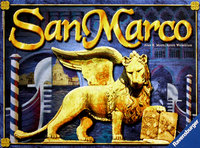
|
Decisions, decisions, decisions. Whether to go for a banishment and transfer, or to build a bridge and move the Doge? How many limit points to take? Which regions to go after; should it be Santa Croce and Dorsoduro or Castello and San Polo? What is everyone else going to try to do? These are just some of the many questions you will face during a game of San Marco. What difficult, agonizing questions the game poses, and what brain-burning fun it is.
First things first, what are you getting in the box and what does it cost? San Marco comes with 1 game board, 100 aristocrat blocks (25 in each of four different colors), 8 prestige markers, 12 plastic bridges, 62 action cards, 28 limit cards, 1 doge figure, 1 die, and 1 phase marker. San Marco retails for $35.00. The components are generally very good. The board is absolutely gorgeous, with very attractive colors, and is also functional, and not too distracting. While the aristocrat blocks are a bit too small, this seems to be a common problem with eurogames. The bridges would be nicer if they were made out of wood, but the plastic bridges serve their purpose. The cards are small, but workable, and the images on them are clear enough to convey their meaning without being too cryptic. Finally, you may recognize the doge from Princes of Florence. Overall, the components are good (especially the board), but not exceptional.
Click here to read the full article...
Review: Through the Desert - More than Meets the EyeDecember 22, 2005 |
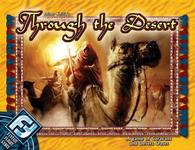
|
When you first open the box of Through the Desert, and see all those pastel camels and severed plastic palm trees rolling around there, you may wonder whether youíve made a mistaken in picking up Herr Kniziaís own favorite design. Let me reassure you that you have not. In fact, far from it. In this game you will find many hours of engrossing gameplay hidden behind childish-looking pieces and straightforward rules.
First things first, what are you gonnaí get and whatís it gonnaí cost you? Through the Desert comes with 1 game board, 175 plastic camels, 30 plastic riders, 45 watering hole counters, 5 plastic oasis trees, and 40 point chips. The game retails for $29.95. That comes out to be about 17 cents a camel, which may seem a bit steep at first. The components of this Fantasy Flight game may leave something to be desired, particularly the game board, which never lays entirely flat, but what it lacks in presentation, it more than makes up for in gameplay. In the end, I think youíll find the pastel pieces and clip-on riders somewhat endearing, and part of the gameís charm.
Click here to read the full article...
I know what you're thinking: another stupid list about the games that someone recently acquired?! I do apologize, but I could not resist the opportunity to brag a little. Actually, no, I'm just glad my collection is growing and giving me the opportunity to try lots of new games. Moreover, this list hopefully gives me the opportunity to get your comments on these games and other games you recommend. Perhaps you can tell me what you think of the games I just got or about useful variants that you like to use when playing them. Or you could suggest games that I'm clearly missing and just need to get (don't bother suggesting Ra, El Grande, or Goa because those will all get ordered as soon as the reprints come out), but something like Attika or Clans or Through the Desert, which I'm considering, but am not yet sold out, could use some further praise or criticism. Anyway, enjoy, I know I will.
Click here to read the full article...